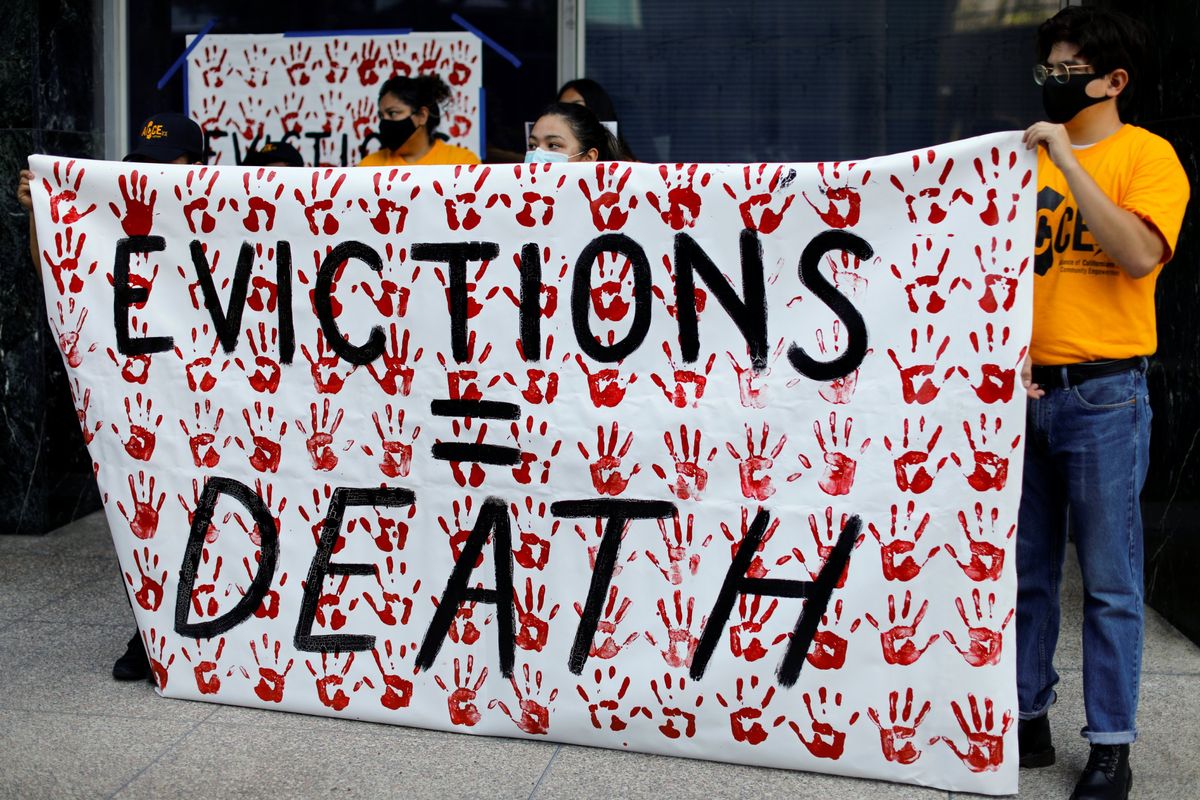The effect the pandemic has had on America’s renters, explained

A few minutes every morning is all you need.
Stay up to date on the world's Headlines and Human Stories. It's fun, it's factual, it's fluff-free.
Eventually, federal protections coming in the form of the CDC agency order gave renters extra room to breathe. Despite these protections, landlords were able to find loopholes in the language of the order and thousands were still evicted.
As increasing numbers of Americans found themselves laid off as a result of the coronavirus pandemic, many started to worry about how they’d manage to keep paying their rent. Eventually, the Trump administration announced that the Centers for Disease Control and Prevention (CDC) signed an agency order temporarily halting evictions.
These protections for renters ran from September 4, 2020 until December (though it was later extended into January).
When the Biden administration took over in January, it looked to continue protections for those who had lost their jobs and extend protections for renters further into March as part of the US$1.9 trillion COVID-19 relief package. Cities and states also offered emergency rent-assistance programs across the country, making sure their citizens had the shelter they needed. Landlords, however, have been paying the price, with many running late on mortgages, missing payments and failing to repair big-ticket issues due to their financial woes.
Previous renter assistance
Former-President Donald Trump’s original executive order addressing an eviction moratorium actually only ordered regulators to study whether a moratorium would be necessary and if the administration could appropriate money for rental assistance. Most renters, meanwhile, relied on state and local moratoriums around the country in order to stay in their homes.
Eventually, federal protections coming in the form of the CDC agency order gave renters extra room to breathe. Though this temporarily halted evictions, it did not offer money to help people catch up on their bills, nor did it offer landlords any compensation for their loss in revenue. Despite these protections, landlords were able to find loopholes in the language of the order and thousands were still evicted.
In December 2020, Congress worked on a bipartisan package to address the then-expiring benefits previously given by the CARES Act. In the previous month, the Center on Budget and Policy Priorities found that “an estimated 12.4 million adult renters (1 in 6) reported that they were not caught up on rent.”
Part of the package included US$25 billion in “rental assistance,” which provided money to states and local governments to provide grants to candidates that qualify. This program allowed renters to spend their money on “rent, rental arrears, utilities and home energy costs, utilities and home energy costs arrears, and other expenses related to housing.”
This program would help both renters to catch up on bills and give landlords rent to put toward their own costs. However, housing experts have reported that few Americans have actually benefited from this program, as the influx of federal programs has complicated implementation.
Biden’s renter support plan
One of the first actions the Biden administration took was securing the housing of millions of Americans who had recently become unemployed due to the coronavirus.
“1 in 5 renters and 1 in 10 homeowners with a mortgage are behind on payments,” Biden stated in his Day One executive order fact sheet.
In late January, CDC director Dr. Rochelle Walensky signed an order extending the Trump administration’s original moratorium through March 31.
In a press release, Walensky said, “The pandemic has also exacerbated underlying issues of housing insecurity for many Americans. Keeping people in their homes and out of congregate settings — like shelters — is a key step in helping to stop the spread of COVID-19.”
But this was again not a long enough extension and the Biden administration is again looking into another extension of the program. At least 10 million people reported to the United States Census that they are behind on their rent and the CDC has considered extending the program again.
However, some at the CDC have expressed hesitation. The Washington Post reported that the CDC doesn’t think it has the authority to extend the moratorium, with their initial apprehension dating back to the original order under former-President Trump.
“The previous administration used CDC’s authority to put this program in place in a way that no one at the agency thought it had the authority to do,” an anonymous source told The Washington Post.
Avoiding evictions may help renters and slow the spread of the coronavirus, but it still leaves landlords with missing payments. The freeze on evictions leaves many landlords, especially ones who own small units, behind on their own mortgages. Additionally, it results in unexpected issues like squatters who cannot be removed through the eviction process.
The COVID-19 relief package meant to address this, with portions of the package dedicated to providing back payments. The proposal the Biden administration released in January offered an additional US$30 billion in rental assistance in the hope of keeping renters in their homes while putting money in the hands of their landlords.
“These funds will ensure that the hardest-hit renters and small landlords,” the proposal stated, “aren’t put in the position where they can’t cover their own housing expenses.”
Though this money has not made its way through the system, the administration hopes the money in the bill will buy the time necessary for the economy to bounce back.
Have a tip or story? Get in touch with our reporters at tips@themilsource.com




Comments ()